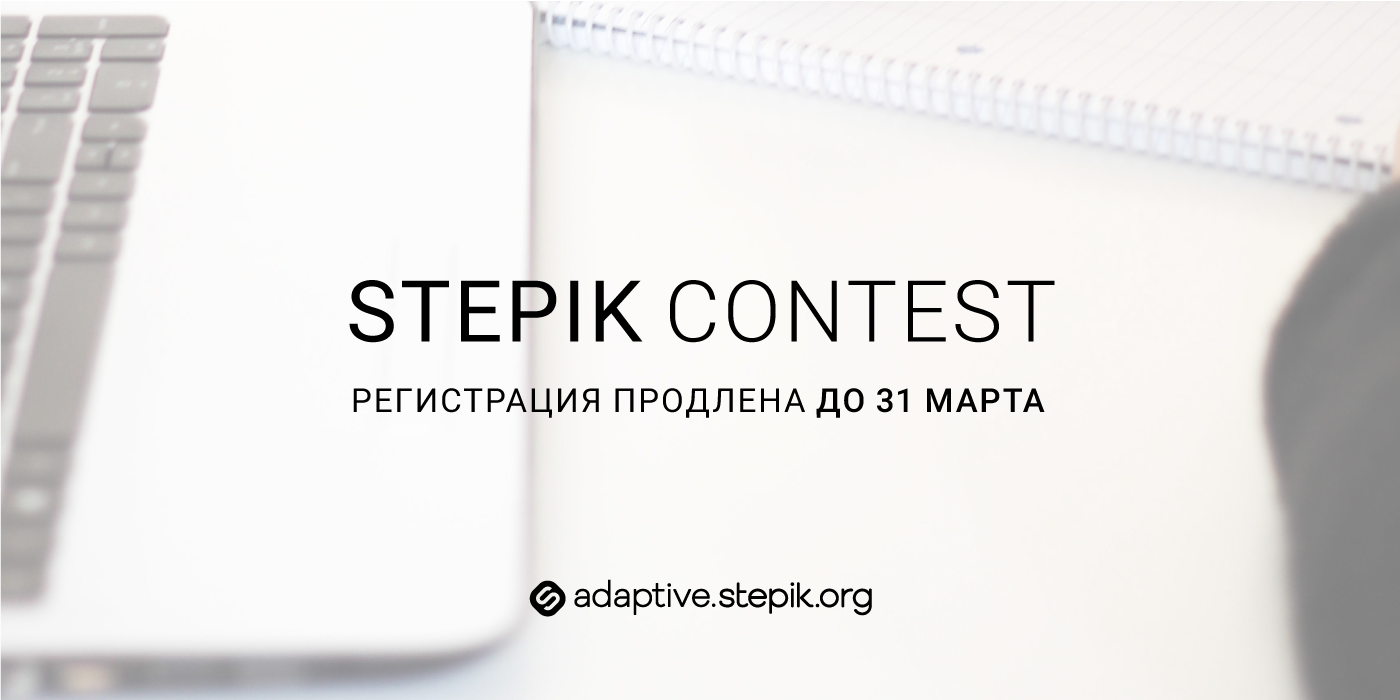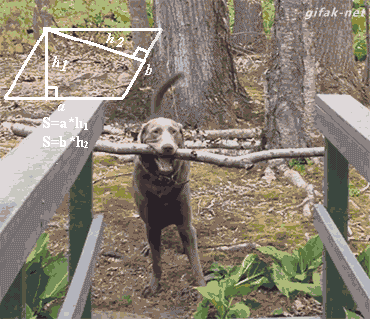The deadline of the Stepik Contest contest is extended until March 31, it's time to create IT tasks
New Year's holidays and January were very fast and instead of a large number of courses for the Stepik Contest , the Stepik team received many requests to extend the deadline. We decided to extend the term of the competition until March 31, and now - to sum up the interim results, answer the questions and clarify all the unobvious moments of the competition.
So, the Stepik Contest contest, a deadline of March 31, in order to win from $ 2K to $ 10K, you need to create 20+ tasks on IT topics on the Stepik platform (adaptive.stepik.org) .

During the launch of the contest Stepik Contest, we published on Habré a detailed instruction for Russian-speaking participants.
')
We also created a page with a FAQ based on the letters from the participants and regularly add new information there. If it seems to you that there are not enough important issues there, or you have new ones, feel free to write to compete@stepik.org.
And here and now we want to introduce you to a step-by-step guide who will help to take part (and qualify for victory!) In the competition.
How to do it better?

Theoretical lessons can contain any materials, there are no special requirements for their presentation, add text, slides, diagrams, links to the theory, shoot a video, everything is accepted!
Each practical lesson can contain one or more exercises and the only restriction is that there should be at least 20 such lessons (there is no upper limit). Exercises can be any (and there are more than 20 types in Stepik) - tests, omissions in the text, numerical and formula tasks and, of course, programming tasks , because their use greatly contributes to the development of topics in Stepik Contest nominations. Each lesson is a unit that will be recommended to the student, and based on the solution of which we will count his progress, so if you have more than one exercise in your lessons, make sure that they are of approximately the same level of difficulty.

And very, very secret from the Stepik team: while the most popular topics are Python and Data Science, so winning the rest of the nominations is a little easier.
Please tell about the contest to your friends, acquaintances and experts of the above areas. Let's make online learning personal and responsive together.
We will be glad to receive your questions and comments.
Team Stepik.
So, the Stepik Contest contest, a deadline of March 31, in order to win from $ 2K to $ 10K, you need to create 20+ tasks on IT topics on the Stepik platform (adaptive.stepik.org) .

During the launch of the contest Stepik Contest, we published on Habré a detailed instruction for Russian-speaking participants.
')
We also created a page with a FAQ based on the letters from the participants and regularly add new information there. If it seems to you that there are not enough important issues there, or you have new ones, feel free to write to compete@stepik.org.
And here and now we want to introduce you to a step-by-step guide who will help to take part (and qualify for victory!) In the competition.
0
Choose a nomination from the 6 proposed: Theoretical Computer Science, Applied Computer Science, Data Science, Python, Java, JavaScript. We understand that there are many interdisciplinary topics (for example, “Neural Network Algorithms in Python”), so please indicate the closest one.one.
Decide on a topic that you want to share with others.How to do it better?
- Topics should reflect one of the above nominations (or, as we have already agreed, the closest of them);
- The topic should not be too narrow or wide, orient yourself to make it easy for a student to study your topic in 30-60 minutes, provided that he has the necessary skills to master it;
- Find your topic or keyword for it in advance on wikidata.org . The wikidata base is used by us when tagging all lessons with tags, so that robots can more easily navigate through all the variety of content.
2
Create an account on the Stepik platform, if you are not yet a user. In general, being a registered Stepik user is quite useful, but also free. You can study at 70+ courses and teach yourself, but back to the competition.3
Create a course in a profile, give it a meaningful name, do not put deadlines.four.
In the course, create two modules: the first will be theory, and the second will be tasks. Open the secret: as soon as your course is ready, we will connect it with other courses and give it to students for study. Therefore, divide theory and practice into two modules, but do not waste time on a consistent, methodically adjusted arrangement of educational material.
five.
In the modules, create theoretical and practical lessons; this can be done both inside the course and in your personal profile.Theoretical lessons can contain any materials, there are no special requirements for their presentation, add text, slides, diagrams, links to the theory, shoot a video, everything is accepted!
Each practical lesson can contain one or more exercises and the only restriction is that there should be at least 20 such lessons (there is no upper limit). Exercises can be any (and there are more than 20 types in Stepik) - tests, omissions in the text, numerical and formula tasks and, of course, programming tasks , because their use greatly contributes to the development of topics in Stepik Contest nominations. Each lesson is a unit that will be recommended to the student, and based on the solution of which we will count his progress, so if you have more than one exercise in your lessons, make sure that they are of approximately the same level of difficulty.
6
Arrange the tags so that your lessons will be adopted by the adaptive system Stepik. This is very easy: each lesson should contain a nomination tag, a tag for your topic and a tag for a subtopic or category that is learned in this lesson. It is also important to put the recommended tags (the names of the topics that you need to master before studying yours) and then perfectly prepared students will come to you. Any questions? An article to help .7
Test tasks with three friends to eliminate ambiguities in the condition and errors. Within the framework of the competition there will be no pre-moderation of tasks as such.eight.
Fill out the form . If you have not completed the course, but plan to, fill out the form anyway, this will be a confirmation of your participation in the competition.
And finally a few success secrets:
- Follow the recommendations and do not be afraid to ask questions if something is not clear;
- Do tasks and lessons about what interests you;
- View examples of adaptive courses to understand the logic of recommendations: Adaptive Python and Adaptive Python course ;
- Do not delay the creation of the material for the last week before the deadline (here as with the development :).
And very, very secret from the Stepik team: while the most popular topics are Python and Data Science, so winning the rest of the nominations is a little easier.
Please tell about the contest to your friends, acquaintances and experts of the above areas. Let's make online learning personal and responsive together.
We will be glad to receive your questions and comments.
Team Stepik.
Source: https://habr.com/ru/post/321114/
All Articles